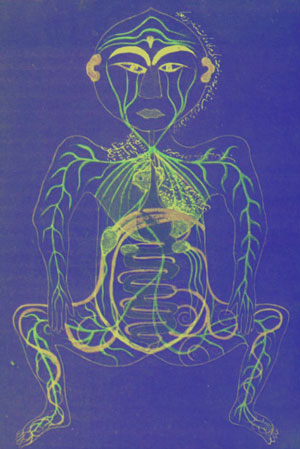Get to know your CADA/West
June 2014 Member's Newsletter
This edition features a reminder about the CADA/West AGM; a profile of CADA/West Board Chair & Dance Artist Josh Martin; some suggested summer reads & our monthly dance citizenship challenge.

CADA/West AGM @ DOTE
Notice is hereby given that the Annual General Meeting of the members of CADA/West is called for and will be held at The Firehall Arts Centre (280 E Cordova St, Vancouver BC), on the 12th day of July at 6:15pm (PST) for the following purposes:
- to receive the financial statements and Annual Report for the Society for the financial year ended March 31, 2014
- to elect Directors for the Society
- to appoint Auditors of the Society for the ensuing year
- to transact other business as may properly be brought before the meeting
Voting by proxy is not permitted.
This year's AGM takes place as a part of the Dancing on the Edge Festival. Attend the AGM from 6:15–6:35pm & watch the 7pm DOTE Show for a special CADA/West Member rate of $22.
Contact us to take advantage of this ticket deal

Profile: Josh Martin
Why did you join the board of CADA/West?
I joined the CADA Board in 2008 because I was extremely interested in the idea of linking together very diverse artists and professionals to have a unified and louder voice for issues that affect all dance artists and our place in the cultural workforce. It was the “power in numbers” stance that I really got behind, and the sense of community citizenship, in that there is great potential unlocked if we all invest and get onboard.
As someone who saw himself pursuing professional dance for the long haul, I had a strong desire to be part of the continuing conversation surrounding what dance artists want and need to feel safe and protected in their workplace, and more financially secure in their ongoing practice and careers. I still don’t foresee a time when this will ever cease to be an important conversation, and so by joining CADA, I hoped to play a part in instigating any type of small changes that would create a healthier future for dance in Canada.
Additionally, I saw great value in having a better understanding of the inner workings of not-for-profit boards, as this seemed to be a very beneficial experience to have within our sector. I would highly recommend joining a board to any emerging dance artist, so long as you are passionate about its cause, as it is likely to involve a great deal of learning and problem-solving skills that I see as being applicable to any dance career.
What have you learned during your 2-year tenure as board President?
A lot, really. Too much to type. But some of what I’ve learned is:
That the dance world is absolutely massive, and that there is no end to the spectrum of where people identify on this map. Trying to fully comprehend each perspective is impossible, however, finding commonalities isn’t.
That the bigger that an organization like CADA gets, the more it relies on having a very engaged and vocal membership to make sure it remains relevant and useful. Our members are too wide-spread and distinct from one another to always be fully represented by the board, and without hearing directly from those we are acting on behalf of, we can become blind to important viewpoints and issues. CADA is its members.
That extremely dedicated and passionate individuals who simply offer their time and energy are just as, if not more so, valuable than those who may bring a unique knowledge or skill set. Find the people who just show up and offer a point of view, and the rest becomes easy.
That dance artists from different disciplines and communities, and even sometimes within the same field, often know surprisingly very little about one another and the way they work. We need only to start looking around at each other to gain access to a huge range of interesting models and philosophies around dance practices that can be really useful to the way we approach our careers.
You can do anything, but not everything. This is true of ourselves and of organizations. I’ve learned that it is so important to take a step back, not only to be sure that what you’re doing makes sense, but also to be sure it makes sense for you to be the one doing it. There are as many overlaps as there are gaps in our sector, and this is something we need to keep in mind constantly.
What roles do you want to see CADA/West fulfilling in future?
I will be submitting an official list of recommendations and actions to the current and incoming board as I step down after the July 12th AGM, and I would be happy to make this document available to any interested members.
Many of my recommendations centre around a refocusing of the majority of CADA/West’s resources and efforts on issues that affect dance professionals specifically within their employment arrangements, workplace standards and financial well-being. I believe that CADA/West should stay tied to existing organizations who offer dance artists other services, education and opportunities that help support the development of their craft, partnering with them to ensure our members are aware of, and can benefit from, their programs and initiatives. However, I feel that CADA/West’s role needs to be more distinct and clearly defined as an organization concerned about the realities of dance as an occupation, the artist as a worker, concentrating on the things that assist members in their jobs so that they can focus on their work. There is still much we could be doing purely on this front.
However, that said, I do still feel that CADA/West is in a very strong place to be the organization that connects us all to one another, bridging artists and communities. It holds members across BC, in the Yukon and Alberta, along with other nomadic artists. I am recommending that CADA continues to identify and provide opportunities for fellow dance professionals to come together, to gather and communicate the issues affecting them, to share ideas and resources with one another, and to jointly build a common platform for positive change.
As we are the Canadian Alliance of Dance Artists, I have been thinking a great deal about what the word “alliance” really means in our context, and what this word calls for from both the organization and its members. I hope everyone with stakes in dance will do the same as the organization strives to push forward.

Twitter Highlights
Summer is a great time for research, perhaps to start thinking about new projects or because, maybe with a bit more time on our hands, we just can. Please find below selected links, from some of our recent tweets, to get you thinking:
WOW, have you ever checked out @Western_Front's online archive? See Unfit for Paradise, 1981 w/ Margaret Dragu, Jane Ellison & Elizabeth Chitty
Misty Copeland to Make Her Debut This Summer as Swan Queen with ABT | BDBB: The Black Dance and Broadway Blog
It's time to give the artists more control. Susanna Eastburn, chief executive of Sound and Music via @guardian
Choreography is dead. Long live dance via @guardian
I went from ballet dancer to CEO and this is what it taught me via @guardian
How YouTubers Are Turning Digital Audiences into Real Life Ticket Sales #auddev
So proud of @missjennydancer! Vancouver student turns love for dance into thriving business - The Globe and Mail
The Watching Dance Project: Kinesthetic Empathy
When the body ages, what happens to the dance? 79-year-old Yvonne Rainer responds to the predicament via @TheDanceCurrent
MIT Senior Uses Choreography to Help Girls Understand Math Concepts
Up online: thoughts on repetition and the fine line between trance and tedium
Where Does Dance Live In Our Society? via @HuffPostArts
UbuWeb Top Ten for June selected by @harikunzru
New DanceWorks blog post: Lua Shayenne Discusses the Creative Process
Working for a Living Wage 2014 Making Paid Work Meet Basic Family Needs in Metro Vancouver
Compelling interview w/ @sufeh in this month's @dancecentre Dance Central "I love dance deeply, but I also hate it"
HOW LONG IS A PIECE OF DANCE? @sanj0yr0y on duration and endurance in contemporary choreography
Who Pays Artists? Interesting campaign to talk about how artists make money
Choreographer Wayne McGregor is turning to Neuroscientists to take dance into a new direction.

Speak With Your Feet
This month's dance citizenship challenge...
Attend An AGM.
Attending an Annual General Meeting is a major service for dance companies. Your attendance is recorded and reported to funders that financially support these companies. Often companies like to make it fun, offering performances, snacks and drinks. While there, you'll learn a bit about the business side of running a company and meet the volunteer board of directors, who are usually people passionate about the arts. If you're a member of that company, the AGM is an opportunity to vote on issues arising. It's a democratic process and one that CADA members should at least be familiar with.
If you are hosting an AGM, please contact us and we will get the word out.
CADA/West and its Members,
ensuring dance remains vital to our culture.
designed, written and built by Deanna Peters, CADA/West Communications Officer
